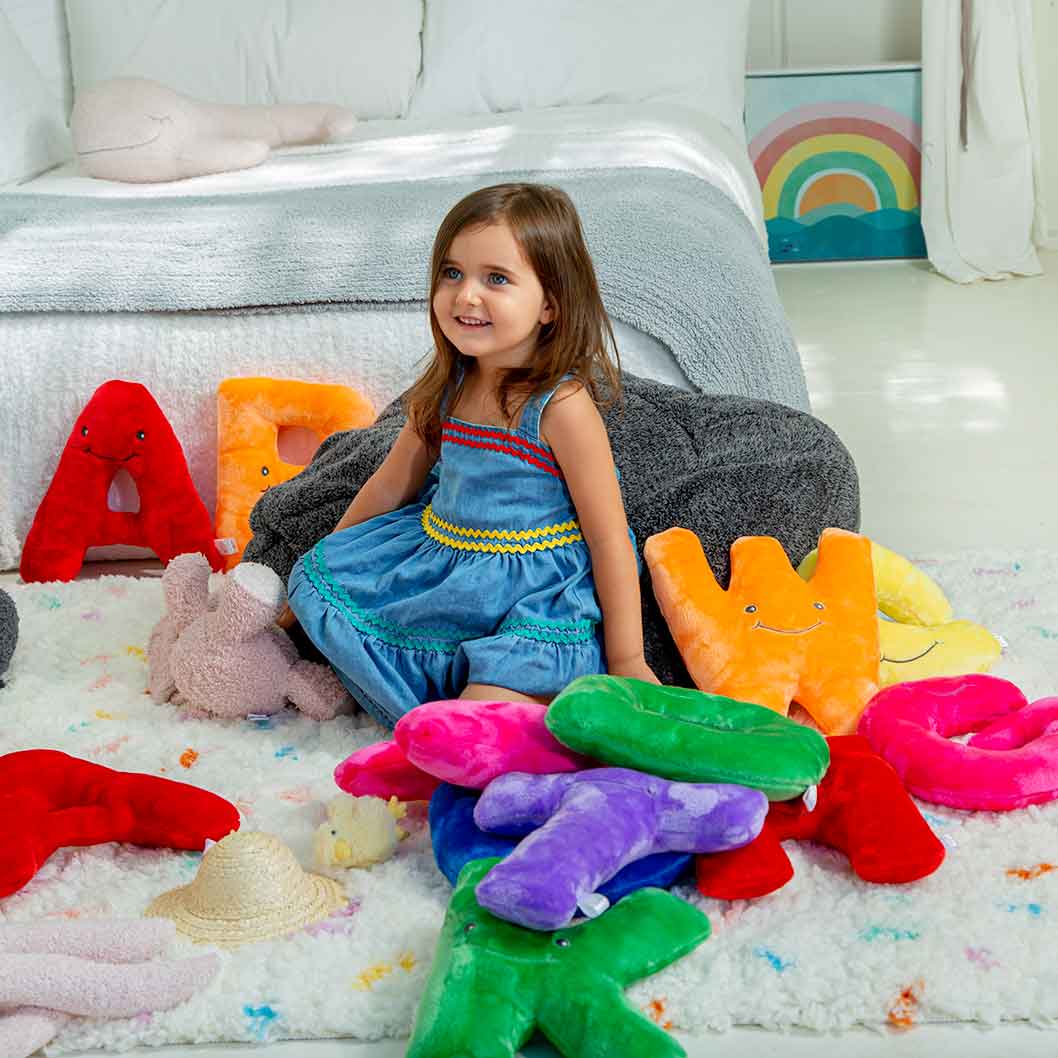
What Is the Alphabetic Principle?
October 03, 2023
Most literary experts agree that early alphabet learning for kids aged 2-6 is the cornerstone of their learning and intellectual development. It allows preschoolers to acquire vital reading and comprehension skills that enhance their grasp of speech and language.
The foundation of early reading and writing development lies in 'The Alphabetic Principle,' a fundamental concept that asserts that letters symbolize sounds. Kids with a solid alphabetic principle foundation can expand their vocabulary rapidly and develop into fluent readers.
This article highlights practical, creative, and imaginative approaches parents can leverage to improve preschoolers' letter recognition and reading skills. Read on for additional insights on how to help your child unlock essential reading and comprehension skills with plush alphabet letters and other resources.
Understanding 'The Alphabetic Principle'
Learning to read can often be daunting for young children, so educators apply the alphabetic principle to ease the learning process. This concept forms the basis of reading and writing by helping kids connect letters of the alphabet to their distinct sounds that form speech.
As they master the connection between letters and sounds, preschoolers gradually bridge the gap between written symbols and verbal language, unlocking reading, learning, and communication skills.
Parents and educators support early learning by helping their kids understand and practice the alphabet principle. This code reinforces cognitive development by strengthening letter recognition, a fundamental step to reaching crucial speech and language milestones.
An integral part of the alphabetic principle is 'phonemic awareness,' a skill that enables young learners to identify, isolate, and manipulate individual sounds to spell unfamiliar words. This awareness teaches a child that sequencing letters and sounds is the key to spelling and writing words correctly.
The Age-Appropriate Approach
By their second birthday, most children start showing an interest in letters of the alphabet. At this stage, parents may introduce educational tools such as alphabet-learning toys to kickstart their child's reading journey. By age 5-6, children who have had exposure to alphabet learning materials often possess sharp decoding skills and phonemic awareness, enabling them to develop their vocabulary rapidly.
Literacy experts emphasize the need to use age-appropriate teaching methods to gradually familiarize young learners with letters and words while keeping them motivated and engaged. Alphabet learning toys are effective for young kids struggling with reading comprehension, as they are designed to keep promote learning through play.
The Power of Hands-On Learning
Multiple studies have shown that hands-on learning helps retain the interest and focus of young children. This approach effectively enhances retention and understanding, nurturing strong reading and comprehension skills.
Parents and teachers can unlock the power of hands-on learning by introducing fun educational toys during playtime. They can also use speech and reading development activities such as stories, games, and alphabet songs to spark young learner's creativity and sense of adventure.
Using educational tools such as alphabet-learning toys and puzzles helps make the learning process fun and engaging. Plush alphabet letters add an extra layer of intuitiveness by creating unique tactile experiences, which help preschoolers develop problem-solving and fine motor skills.
Introducing Plush Alphabet Letters
Alphapals, an innovative educational toy, is designed to make the alphabet easy to understand and help kids of different ages and learning levels develop the ability to read and write.
The Alphapals team introduces a fun, hands-on learning approach that keeps children engaged throughout their alphabet learning experience. The brand offers a therapeutic learning solution featuring stuffed alphabet toys that kids can snuggle with as they learn about different letters and words.
Alphapals feature uppercase, mini uppercase, and lower case alphabet letters that can be purchased individual stuffed letters or in letter sets that feature all 26 letters. The alphabet plush toy's soft and cuddly design allows kids to touch and hug their letters, making learning the alphabet engaging and fun. This tactile design also helps with the recognition of different colors and shapes, enabling kids to develop problem-solving and visual discrimination skills.
Preschoolers and their parents can explore Alphaland, a section of the alphabet plush toys packed with interesting bios for each letter. The magical world of Alphaland also features a library of videos, songs, new words, and interactive games that foster imagination, kindness, and fun.
Practical Activities
Parents can provide a range of practical activities using plush alphabet letters to make learning exciting and enjoyable.
Sorting and matching games that require kids to match their Alphapals letters to words or pictures are a fun-filled way to encourage children to build an interest in sounds, words, and language.
Letter sound recognition exercises are also a great way to develop pre-reading skills in kids. Parents can introduce Alphapals sets to help preschoolers practice letter-sound correspondence and learn how to form words by blending sounds.
Another way to reinforce recognition of letters and words in young children is by creating alphabet stories with plush letters. Alphaland is packed with stories, songs, and nursery rhymes that offer opportunities for kids to explore each plush letter's personality and adventures. Parents can visit Alphaland to read, sing with, and talk to their children to help them learn new letters and start building words.
Imaginative play with Alphapals is another effective way to support alphabet learning. It allows young students to create stories and games around their cuddly letter friends, encouraging them to use their imagination and stimulate their sensory development.
Conclusion
Early childhood educators link a proper understanding of the alphabetic principle to kids' ability to decode letters and sounds and become fluent readers. They recommend hands-on learning using educational toys such as plush alphabet letters to help children gain fundamental letter recognition and reading comprehension skills.
By introducing Alphapals into the educational process, parents can motivate struggling readers to fully grasp the alphabetic code in a fun and comforting way. This game-changing alphabet learning toy also promotes phonemic awareness by aiding preschoolers to identify and manipulate sounds in spoken words. Moreover, this tactile tool facilitates hands-on learning that helps sharpen kids' alphabet reading skills, setting them off on the right path to literacy success.
Shop the collection of Alphapals today to discover their limitless applications in supporting alphabet learning and connecting oral language to literacy. Be sure to check out our blog for more in-depth resources and inspirational products that help parents incorporate learning through play into everyday life.









